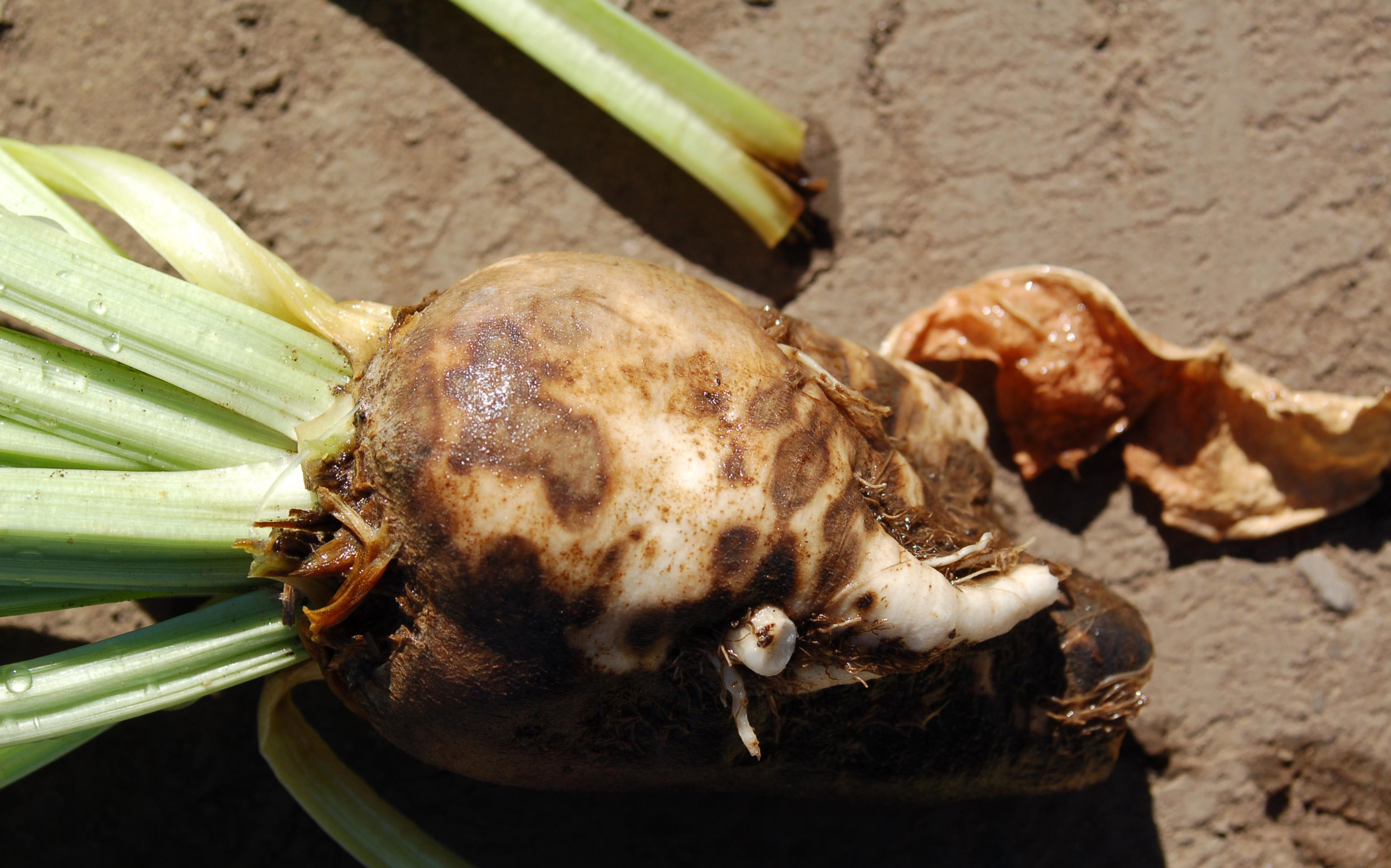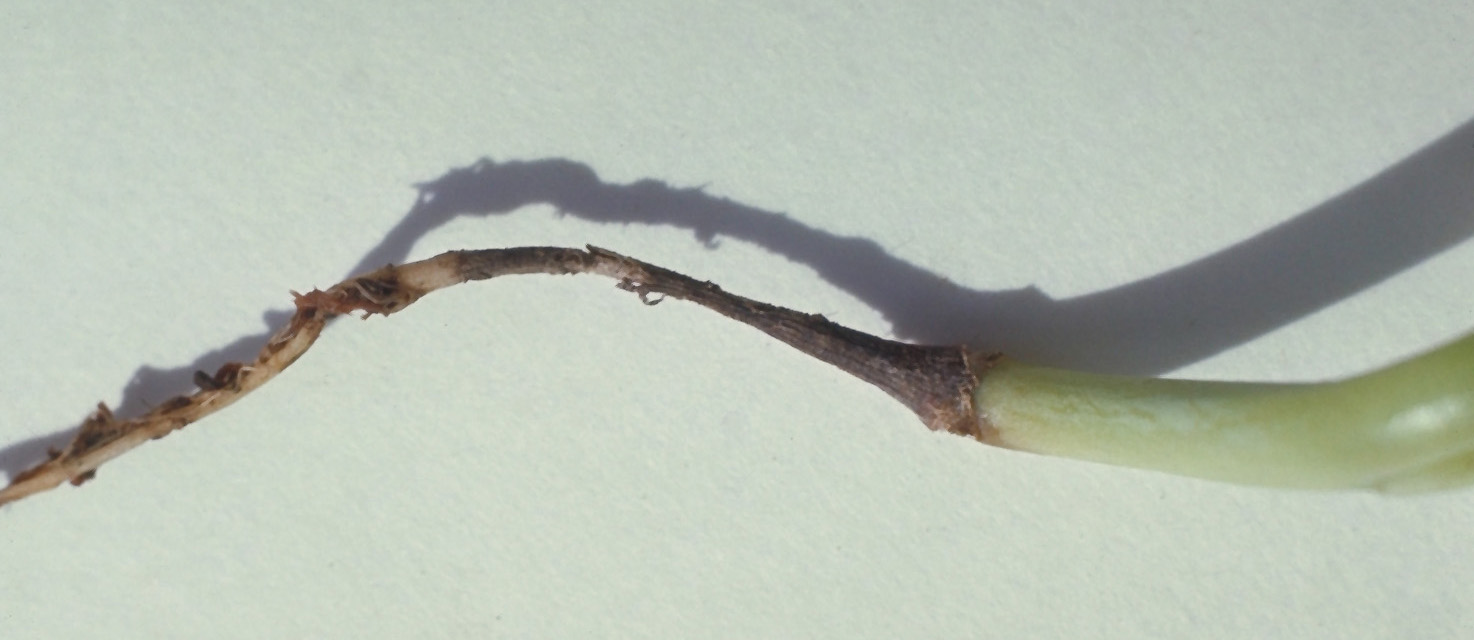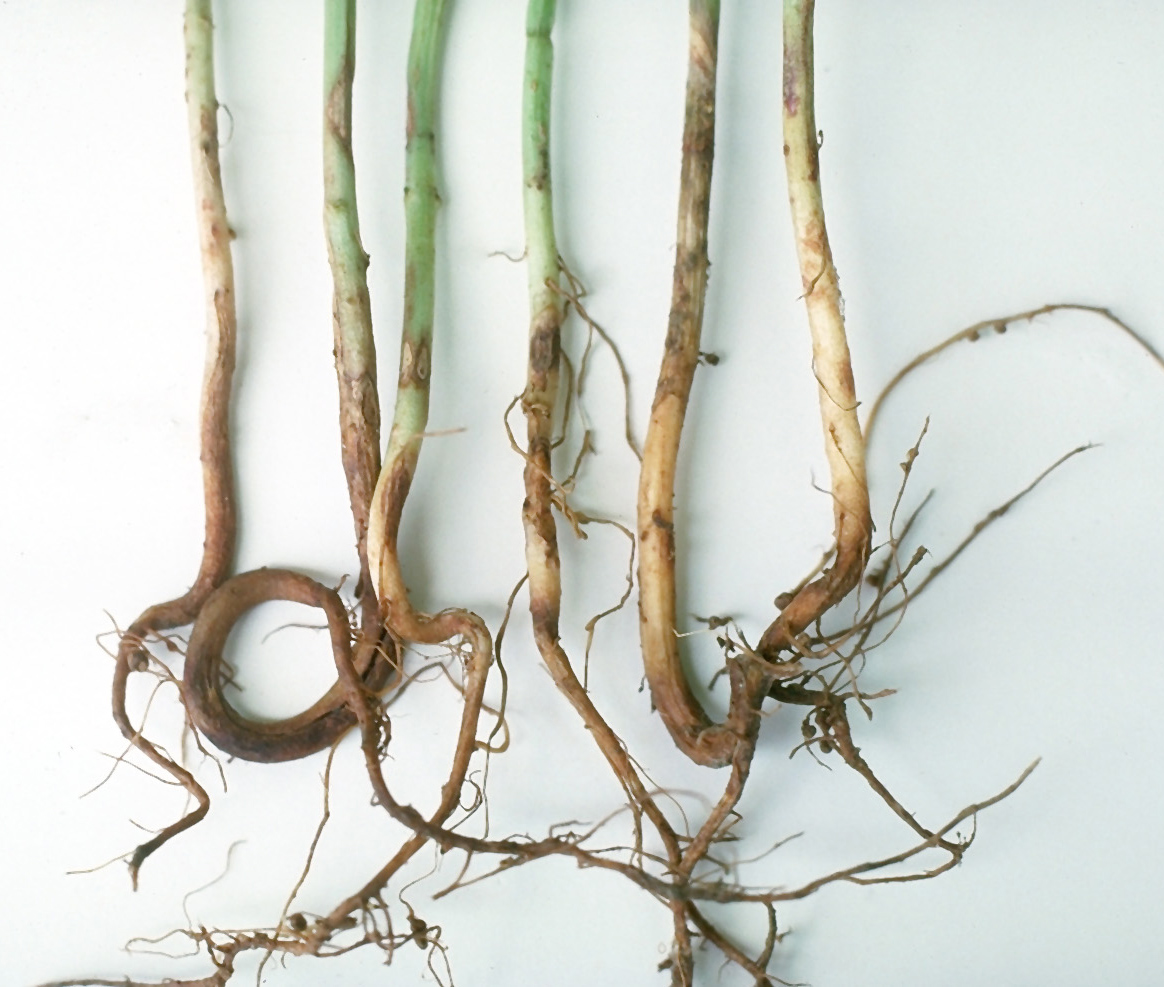Rhizoctonia Root Rot
Return to Diseases
Rhizoctonia root rot (Rhizoctonia solani) is caused by a fungus that overwinters in soils and in association with crop debris. Similar to other root rots, roots decay and turn brown; however, Rhizoctonia lesions on roots and lower stems are often reddish-brown in color. Rhizoctonia also has a foliar phase on select crops in Kentucky, notably beans, leafy greens, and tobacco.

Rhizoctonia root rot on beet.
(Photo: Oliver T. Neher, The Amalgamated Sugar Company, Bugwood.org)

Rhizoctonia root rot on cabbage.
(Photo: Unknown (1968), University of Kentucky)

Rhizoctonia root rot on bean.
(Photo: Cheryl Kaiser, University of Kentucky)
Management:
- Practice crop rotation and minimize overwatering.
- Apply labeled fungicides to suppress disease.
- Consider fumigation or solarization on severely infested sites.
